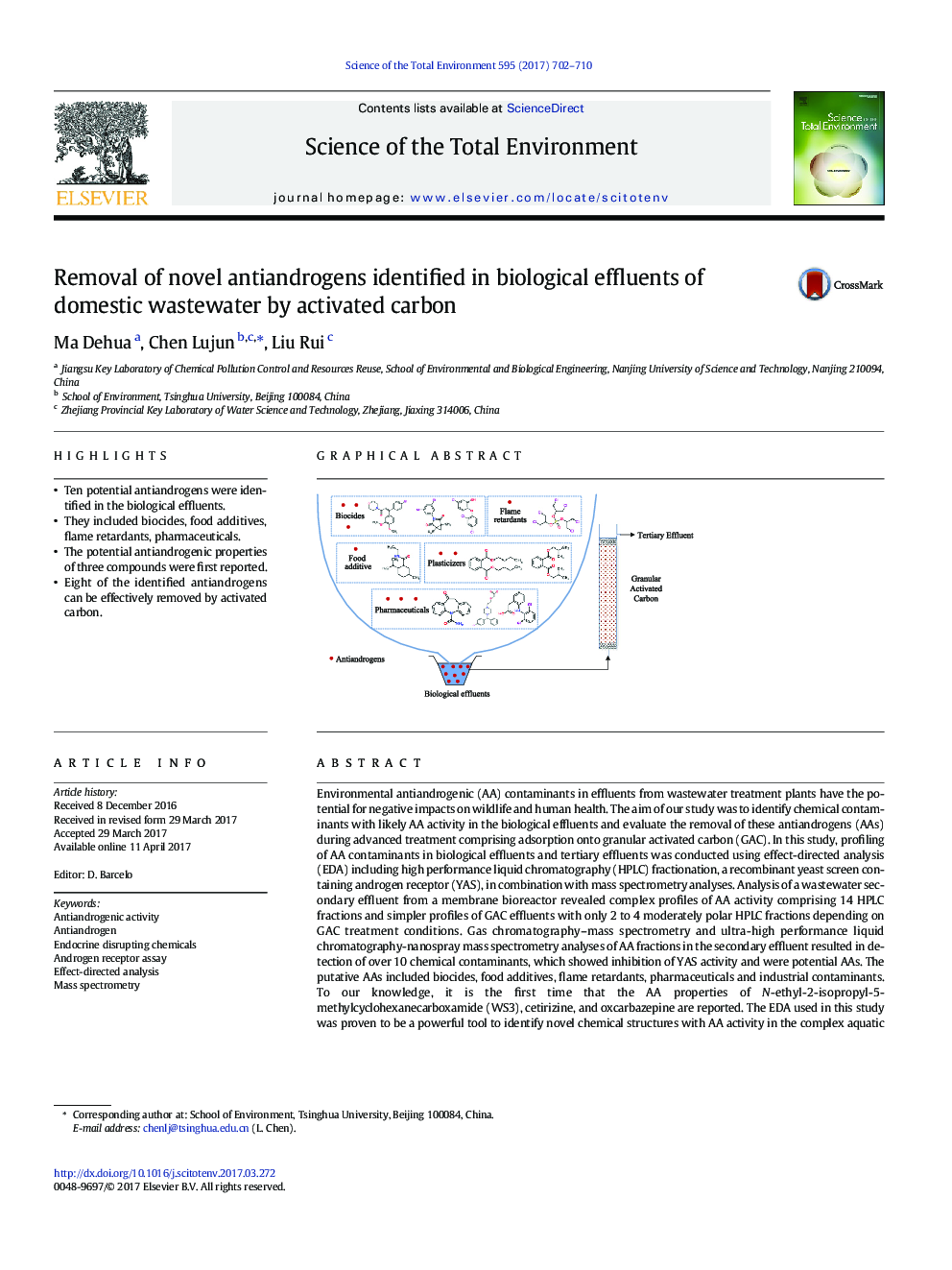| کد مقاله | کد نشریه | سال انتشار | مقاله انگلیسی | نسخه تمام متن |
|---|---|---|---|---|
| 5751324 | 1619701 | 2017 | 9 صفحه PDF | دانلود رایگان |
- Ten potential antiandrogens were identified in the biological effluents.
- They included biocides, food additives, flame retardants, pharmaceuticals.
- The potential antiandrogenic properties of three compounds were first reported.
- Eight of the identified antiandrogens can be effectively removed by activated carbon.
Environmental antiandrogenic (AA) contaminants in effluents from wastewater treatment plants have the potential for negative impacts on wildlife and human health. The aim of our study was to identify chemical contaminants with likely AA activity in the biological effluents and evaluate the removal of these antiandrogens (AAs) during advanced treatment comprising adsorption onto granular activated carbon (GAC). In this study, profiling of AA contaminants in biological effluents and tertiary effluents was conducted using effect-directed analysis (EDA) including high performance liquid chromatography (HPLC) fractionation, a recombinant yeast screen containing androgen receptor (YAS), in combination with mass spectrometry analyses. Analysis of a wastewater secondary effluent from a membrane bioreactor revealed complex profiles of AA activity comprising 14 HPLC fractions and simpler profiles of GAC effluents with only 2 to 4 moderately polar HPLC fractions depending on GAC treatment conditions. Gas chromatography-mass spectrometry and ultra-high performance liquid chromatography-nanospray mass spectrometry analyses of AA fractions in the secondary effluent resulted in detection of over 10 chemical contaminants, which showed inhibition of YAS activity and were potential AAs. The putative AAs included biocides, food additives, flame retardants, pharmaceuticals and industrial contaminants. To our knowledge, it is the first time that the AA properties of N-ethyl-2-isopropyl-5-methylcyclohexanecarboxamide (WS3), cetirizine, and oxcarbazepine are reported. The EDA used in this study was proven to be a powerful tool to identify novel chemical structures with AA activity in the complex aquatic environment. The adsorption process to GAC of all the identified antiandrogens, except WS3 and triclosan, fit well with the pseudo-second order kinetics models. Adsorption to GAC could further remove most of the AAs identified in the biological effluents with high efficiencies.
236
Journal: Science of The Total Environment - Volume 595, 1 October 2017, Pages 702-710
